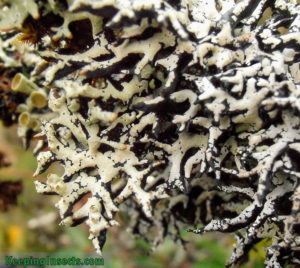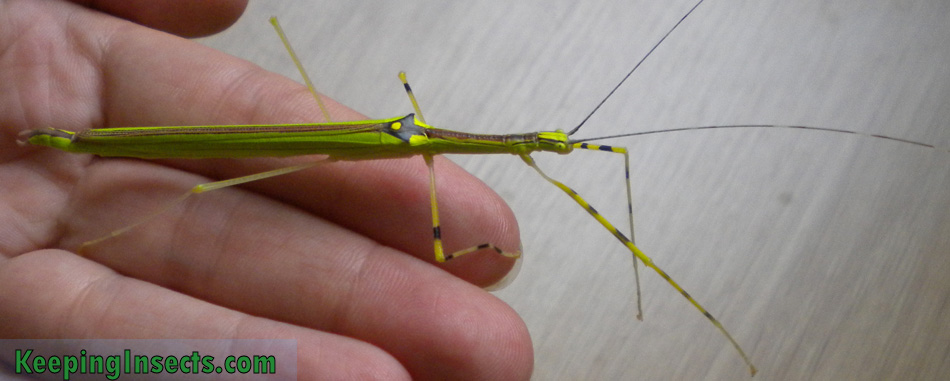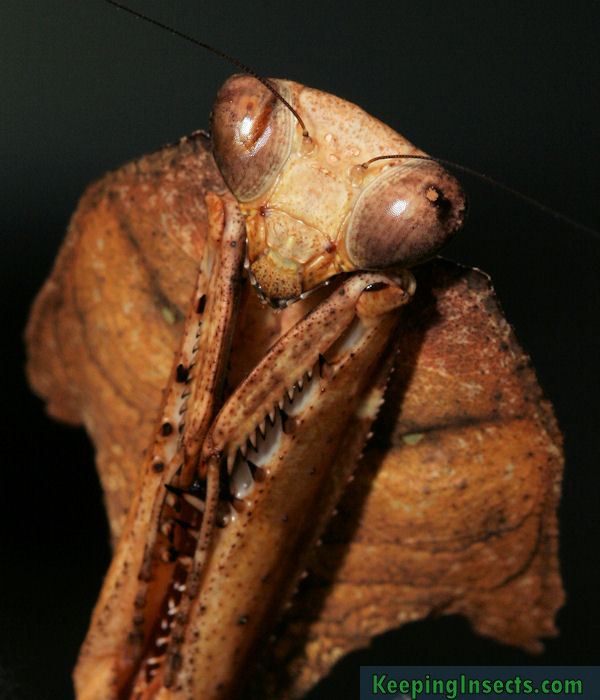The Giant Prickly Stick Insect (Extatosoma tiaratum) from Australia is a very popular stick insect as a pet. It is big, pretty and very easy to rear. You will mostly find this species of stick insect in colors of brown. Uniformly light brown or light brown with some darker spots are the most common colors. But did you know you can also raise green or even lichen-like individuals? Especially the lichen variety is very rare and very impressive. They are white to white-green with black spots. Check the pictures out!
Anyone that is keeping Giant Prickly Stick Insects can create some individuals in this color. The difference in color is not due to genetics, but due to environmental circumstances. It is possible that some genetic stock has a greater tendency to turn into lichen morphs, but all Giant Prickly Stick Insects can do it.
The colors a young Giant Prickly Stick Insect nymph experience around it will determine the colors it will show. Of course it can only show colors that are in its natural capabilities, so a purple Giant Prickly Stick Insect is out of the question. But green and lichen are both color patterns that are possible for this species of stick insect. Lichen is a common part of the natural environment of Giant Prickly Stick Insects in their habitat in Australia. Adopting the lichen color will therefore help the insects blend into their environment.
It’s easy to create lichen-morph Giant Prickly Stick Insect nymphs. You just need to raise Giant Prickly Stick Insect nymphs since birth in an enclosure full of lichen! Some of the nymphs will molt into lichen color morphs, you will notice this at the first molt. Others will molt into the green color morph and some will not react at all and stay light brown or mottled brown. Only female nymphs will show the lichen color morph. When the nymphs are not lichen in their first molt, it is unlikely that they will do so in subsequent molts.
When the insects reach adulthood they will not stay in their lichen colors. The lichen nymphs will end up as green adults. When a lichen nymph molts it will appear a little bit greener, this fades back to white after about one day.
In this terrarium full of lichens (and their food: bramble leaves) these insects can be hard to spot:

The more common color for a Giant Prickly Stick Insect nymph.

A lichen color morph just after molting. Just after molting they appear more green, this will fade into white again.
Do you want to know how to raise Giant Prickly Stick Insects (Extatosoma tiaratum)? Check out their page.

























